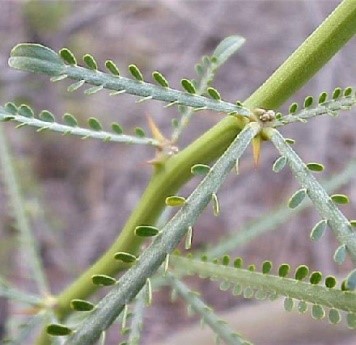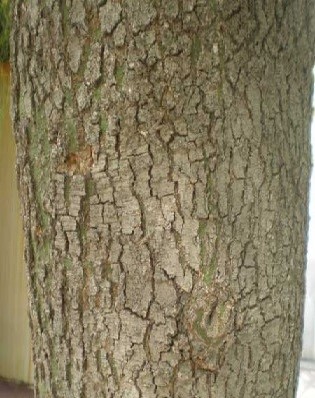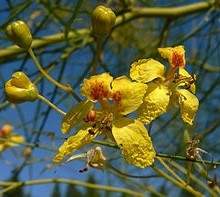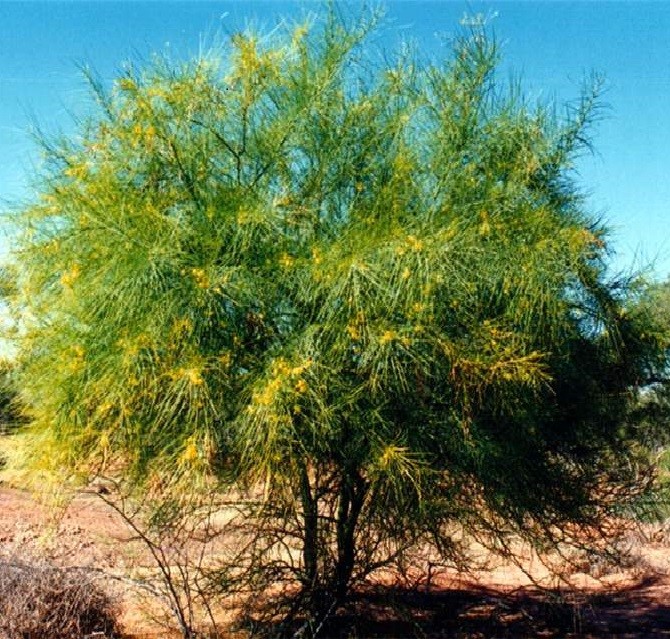Trees
Parkinsonia aculeata Linn.
Parkinsonia aculeata Linn.
Description :
A
small evergreen tree or shrub. It is often crooked with a broad crown. At
maturity it reaches heights of 5 to 9 m and diameters of approximately 0.3 m.
Twigs and branches are armed with thorns. The leaves are compound with the tiny
leaflets borne on long flat leaves 15 to 35 cm long that look like blades of
grass. The bark is smooth and has a greenish color. The yellow flowers occur in
May in hanging bunches with the individual flowers arranged along a central
axis. The fruit is a pod 7 to 10 cm long, maturing in June and July. It is
easily reproduced from seed or by vegetative means. The seed can be stored up
to a year without loss of viability. Pre-treatment of seed is needed to
overcome seed coat dormancy. A water soak for 3 to 4 days is usually adequate. A
drought resistant tree that may be damaged by termites. Coarse grain with
greyish sapwood having heavy density with a specify gravity of 0.6.
Distribution :
The
tree is native to vast areas of America extending from Texas, New Mexico and
Arizona south to Argentina. In Pakistan it is a very common sight on G.T. Road
(Grand Trunk) as an avenue plant from Lahore to Peshawar. An intolerant tree
that can adapt to varied soil conditions including salinity. It is successfully
planted in areas below 1300m where precipitation is between 200 and 1000 mm/yr.
It is drought resistant and can exist in a temperature range between -3 to
36°C. It grows poorly on waterlogged sites.
Uses :
A
relatively fast-growing tree. It is ideal for erosion control in arid areas if
protected from grazing. It can be used for hedges, windbreaks and ornamentals
in farm forestry programs. Also used as fuel, ornamental, charcoal, fodder,
living hedges, wind and shelter breaks, and erosion control.



